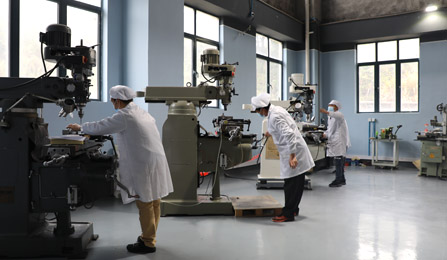Anyone who is in hardware and manufacturing will fully agree with the importance of design for manufacturing (DFM). As a hardware founder, you will not get to the manufacturing lines without going through a comprehensive design for manufacturing stage. Yes, I am saying comprehensive because high-quality products are reliant on the way they are manufactured and assembled, and this boils down to how strong your design for manufacturing stage is.
I have encountered numerous startup founders who idly brushoff design for manufacturing as a simple, light-touch stage which unknowingly bites them once they consider themselves ready for manufacturing. AKA, the startups who think after prototyping the next logical step in contract manufacturing. Combined with many other mistakes, these startups fail to get to market.
This way of thinking is insanely wrong. Throughout this article, I want to give you a comprehensive overview of design for manufacturing and why design for manufacturing is important. Without it, your product will not succeed the way you envision it.
What is design for manufacturing DFM and design for assembly DFA?
Design for manufacturing DFM
Design for manufacturing focuses on reducing the complexity of the manufacturing process. In lamens terms, DFM is what ensures your product has a smooth transition from prototyping to manufacturing (of course we’re ignoring all the engineering elements needed in between this transition) ultimately making your product easier to manufacture.
Consider this. If you have not done a proper design for manufacturing, and your PCB needs someone to spend twenty minutes soldering the components to the board, then it’s not very economical once you begin heading for mass manufacturing. A DFM solves this challenge.
Design for Assembly DfA
Unlike design for manufacturing, design for assembly is the process of ensuring that, when your product is being assembled, it is simple and efficient. DFA looks into reducing the parts of your product so that it reduces the time spent assembling it, in turn, reducing your assembly costs.
How can product design affect manufacturability?
As we’ve discussed the differences between DFM and DFA, you can begin seeing the importance of a well-optimized product design stage. Of course, the design of a product will greatly affect the way it’s manufactured.
For example, an engineer must design your PCBA in such a way that, when it is going through the SMT line (Surface Mount Technology), the heavier components must be placed strategically to ensure smooth fabrication.
Without a strong product design along with a strong design for manufacturing stage, your product is not going to be produced easily. This will result in numerous problems down the line which can be easily avoidable. The best time to begin your design for manufacturing stage is as early as possible.
Concluding the importance of design for manufacturing.
In conclusion, by understanding the reasons why DFM is important by understanding the manufacturing process, we can see key areas of your product’s development that need to be closely considered.
I wouldn’t suggest you make the mistake of considering a DFM process after you’ve passed through the validation stages, firstly, you will need to spend more money on re-designing your product, secondly, you will lose a lot of lead time by doing so, and thirdly, if you decide to move forward without a properly thought-through DFM process, your final product will be scattered with bugs, defects, and ultimately broken devices.





